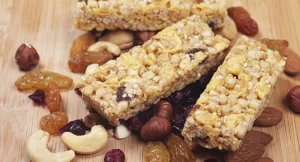

We are a few days away from starting our trip to El Chaltén with the intention of doing some traverses and some day hikes. We already know what things we have to carry in our backpack and now we are wondering what kind of food we should take with us.
Remember that the rough camps (Poincenot, D’Agostini and Capri) do not have food stores or pantries where you can buy food. Therefore, we will have to carry our own food (either if we go for the day or if we plan to do the Travesía Laguna de Tres – Laguna Torre).
Therefore, it is essential to choose correctly what we are going to carry.
According to the WHO, the amount of calories that should be consumed daily is around 2,000/2,500 for men and between 1,500 and 2,000 for women. This is a round number and varies depending on the organism of each person, the daily energy expenditure and many other factors. The idea of this post is not to get into technical details, so the recommendation is always consult with those who know and use this type of post only as a reference.
Now, in a typical mountain terrain, a 70 kg person carrying a 10 kg backpack and walking at an average speed of 3 km/h can burn approximately 520 kcal/h. We are talking about in a day of 8 hours (for example path to Laguna de los Tres), that same person would be burning about 4000 kcal. Again: These are round numbers for exemplification, actual caloric expenditure will vary depending on body weight, walking pace, elevation gain, etc.


When we talk about hiking snacks we refer to all those foods that can be eaten while walking. We remind you that fire is prohibited throughout Los Glaciares National Park and the use of heaters is allowed only in established places. Some examples are listed below:
Additionally (and as good Argentines we are), we can not forget our traditional drink. Some good mates contemplating the Cerro Chalten or on the shores of Laguna Torre, is a treat you have to have at least once in your life. And as an accompaniment, some crackers with pâté, a salami or whatever you like. Remember that all that weight has to be carried! (and most importantly, all garbage must be returned to the village).
In the case of hiking, the walking rations are going to be our lunch. We will be “chomping” several times during the hike until we reach the next destination and can eat something else. That is why it is important that we leave a couple of cereal bars, a handful of nuts, etc. (otherwise, we get hungry and we will have to disassemble the whole backpack).
At the next camp and after setting up the tent, we can sit down to eat something else. There are those who opt for a “strong” meal (elaborated food) at the same time and others who go straight for a “snack” (some tea with cookies or bread) and leave the strong meal for later. That depends on taste.
The truth is that during the day we will have at least 4 important meals:
Additionally, we have 2 alternatives when it comes to food in the mountains. On the one hand we have the freeze-dried food (a type of dehydrated food in which the food is frozen and thawed under vacuum and at low atmospheric pressure) and on the other hand the thermostabilized food (a process in which a plate of food is cooked, vacuum-packed, then sterilized and kept at a certain temperature for a couple of months until the bacteria causing the decomposition are completely eliminated).
The choice of which type of food to buy depends on your budget and the type of activity you are doing. In particular, I recommend that you try both types of food and then draw your conclusions. On the lyophilized foods side, I recommend the Camps Foods brand and on the thermostabilized foods side, the Sabor de Reyes brand.
As you can see so far, there is no right or wrong. At the end of the day, we all go to the mountain to enjoy… And if I want to take a good wine and a good salami, I can do it without any problem!
What we have to take into account is that the more days we go, the more weight we have to carry (both in terms of food and gas for cooking). Therefore it is important to find the right balance and try to minimize the weight as much as possible (this is where the mountain food sachets come into play).
Some final tips to keep in mind:
TrekkingElChalten.com started as a project born from a group of friends passion for the mountains. Here you will learn about all the different activities you can partake in El Chaltén, the hiking capital of Argentina.
Designed by StreetSud – Servicios Digitales in Patagonia Argentina |
Copyright © 2024 | Trekking El Chalten